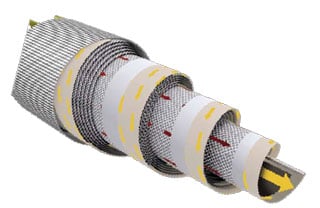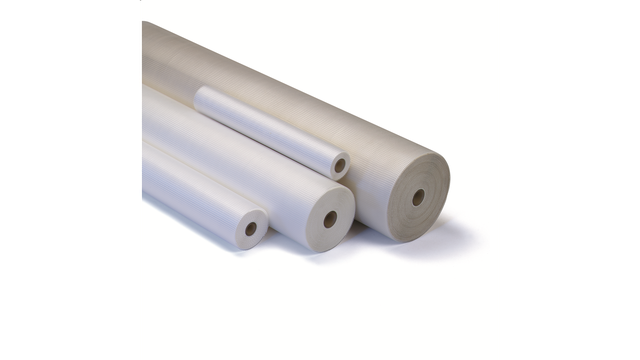Membrana spiralna MF
The microfiltration spiral membranes from Alfa Laval are based on a unique construction of polypropylene support material in a sanitary full-fit design that provides optimum cleaning conditions. The spiral membranes are available with different microfiltration membrane types and in different combinations of length, diameter and feed spacer size
Alfa Laval microfiltration (MF) spiral membranes are extremely cost-effective to operate, largely as the result of the low energy consumption involved. They also have the advantage of eliminating the frequent replacement and disposal of the cartridges and other consumables used in traditional dead-end filtration.
Alfa Laval microfiltration spiral membranes are extremely durable, with service lives that can extend over more than five years.
Microfiltration is used on feed streams where the aim is to remove small-diameter dispersed solids such as bacteria, fat and oil globules without affecting the balance of the components dissolved within the stream.
Alfa Laval offers two series of microfiltration spiral membranes with different pore sizes and flux properties. The membrane materials are either polysulphone polymer or fluoro polymer based on polypropylene support material.
MFG series
The MFG microfiltration spiral membrane is made of polysulphone polymer. The spiral membrane is avaiable in the types MFG1 and MFG2 with pore sizes of 0.1 µm and 0.2 µm respectively.
MFP series
The MFP microfiltration spiral membrane is made of fluoro polymer. This spiral membrane is available in type MFP2 having a pore size of 0.2 µm and MFP5 and MFP8 with pore sizes of 0.5 µm and 0.8 µm respectively.
Benefits
- cost-effective operation due to low energy consumption
- long life time compared to traditional dead-end filtration
- cover a broad spectrum of flux properties and pore sizes
- available in different combinations of length, diameter and spacer size
- sanitary design with all materials in compliance with EU Regulation (EC) 1935/2004, EU Regulation 10/2011 and FDA regulations (CFR) Title 21
- same membrane types available as both flat sheet membranes and spiral membranes
- suitable for extensive range of processes
- manufactured by Alfa Laval's own membrane centre
Zasada działania
The basic technology behind membrane filtration involves using a semi-permeable membrane to separate a liquid into two distinct streams.
Pumping this liquid across the surface of the membrane creates a positive trans-membrane pressure that allows any components smaller than the porosity of the membrane to pass through, forming the permeate.
Any components larger than the pore size simply cannot pass through, and remain behind in what is called the retentate. The surface of the membrane is kept free of blockages by the force of the liquid flow moving parallel to the membrane surface.
A spiral membrane comprises of a number of membrane 'envelopes' with 2 membrane sheets separated by a permeate spacer mesh, each glued to a central permeate collection tube.

Between each pair of envelopes there is a spacer which creates the feed channel, allowing the feed to flow across the length of the spiral membrane, whilst the permeate passing through the membrane into the membrane envelope flows in a spiral pattern to the permeate collection tube.
Red = Feed/retentate.
Yellow = Permeate.

